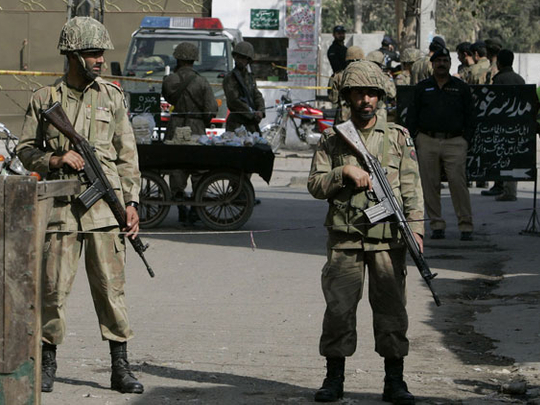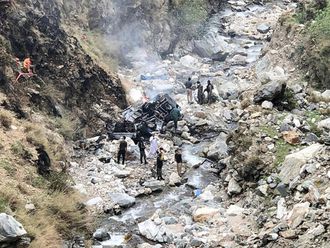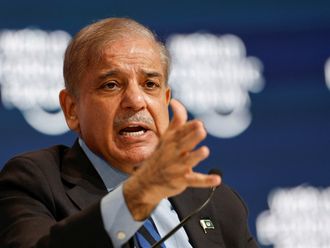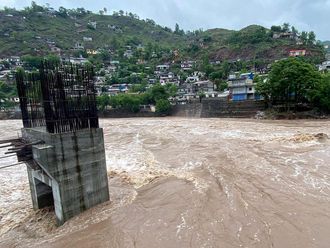
Lahore: A pair of suicide bombers targeting army vehicles detonated explosives within seconds of each other on Friday, killing at least 43 people in this eastern city and wounding about 100, police said. It was the fourth major attack in Pakistan this week, indicating militants are stepping up violence after a period of relative calm.
Hours later, a series of small explosions terrified residents in a different Lahore neighbourhood and injured at least three people. Police officials said the four low-intensity blasts apparently resulted from loose explosives - not packed bombs - scattered through the residential area. While the explosions sent police and rescue workers racing through the area, there were no immediate reports of deaths or major damage.
About 10 of those killed in the twin blasts were soldiers, said Lahore police chief Parvaiz Rathore.
The bombers, who were on foot, struck RA Bazaar, a residential and commercial neighborhood where several security agencies have facilities.
Security forces swarmed the area as thick black smoke rose into the sky and bystanders rushed the injured into ambulances. Video being shot with a mobile phone just after the first explosion showed a large burst of orange flame suddenly erupting in the street, according to GEO TV, which broadcast a short clip of the footage shot by Tabraiz Bukhari.
"Oh my God! Oh my God! Who are these beasts? Oh my God!" Bukhari can be heard shouting after the blast in a mixture of English and Urdu.
Senior police official Chaudhry Mohammad Shafiq said 43 people were killed and about 100 were injured. Some of the wounded were missing limbs, lying in pools of blood after the explosions, eyewitness Afzal Awan said.
"I saw smoke rising everywhere," Awan told reporters. "A lot of people were crying."
No group immediately claimed responsibility, but suspicion quickly fell on the Pakistani Taliban and Al Qaida.
The militants are believed to have been behind scores of attacks in U.S.-allied Pakistan over the last several years, including a series of strikes that began in October and lasted around three months, killing some 600 people in apparent retaliation for an army offensive along the Afghan border.
In more recent months, the attacks were smaller, fewer and confined to remote regions near Afghanistan.
But on Monday, a suicide car bomber struck a building in Lahore where police interrogated high-value suspects _ including militants _ killing at least 13 people and wounding dozens. The Pakistani Taliban claimed responsibility.
Also this week, suspected militants attacked the offices of World Vision, a US-based Christian aid group, in the northwest district of Mansehra, killing six Pakistani employees, while a bombing at a small, makeshift movie theater in the northwest city of Peshawar killed four people.
Rana Sanaullah Khan, the law minister for Punjab state, where Lahore is located, said the renewed attacks are a "sign of desperation" by the militants.
"We broke their networks. That's why they have not been able to strike for a considerable time," he said.
But the attacks show that the loose network of insurgents angry with Islamabad for its alliance with the US retain the ability to strike throughout Pakistan despite pressure from army offensives and American missile strikes.
The violence also comes amid signs of a Pakistani crackdown on Afghan Taliban and Al Qaida operatives using its soil. Among the militants known to have been arrested is the Afghan Taliban's No. 2 commander, Mullah Abdul Ghani Baradar.












